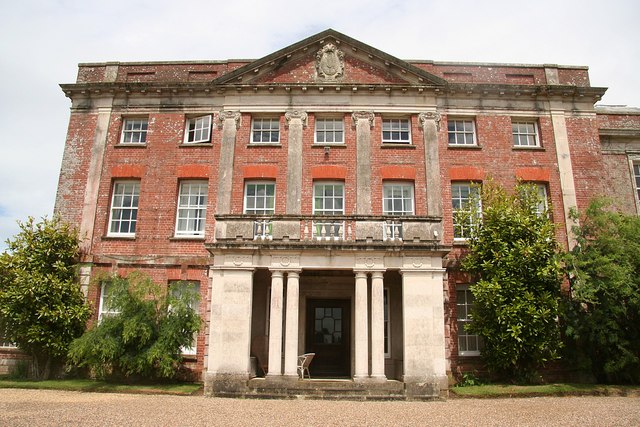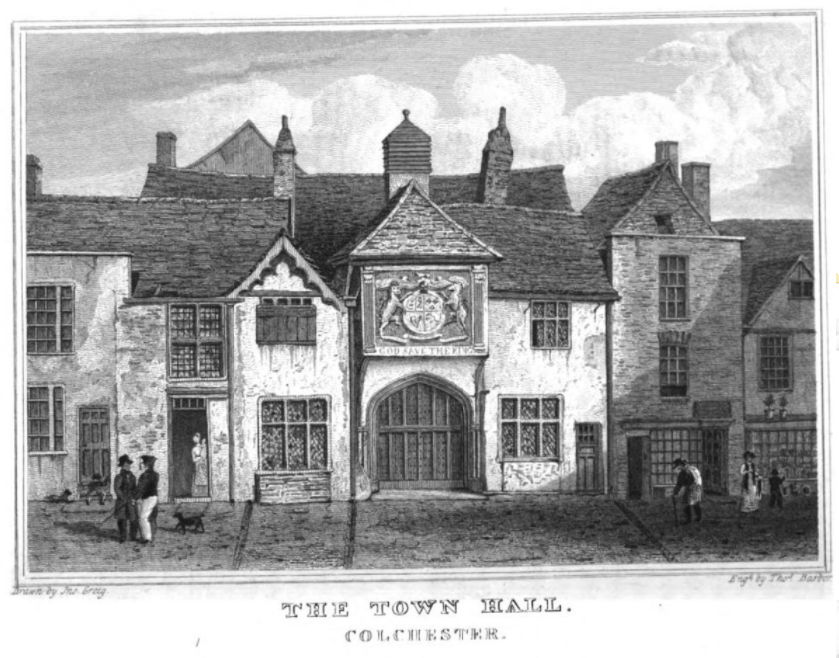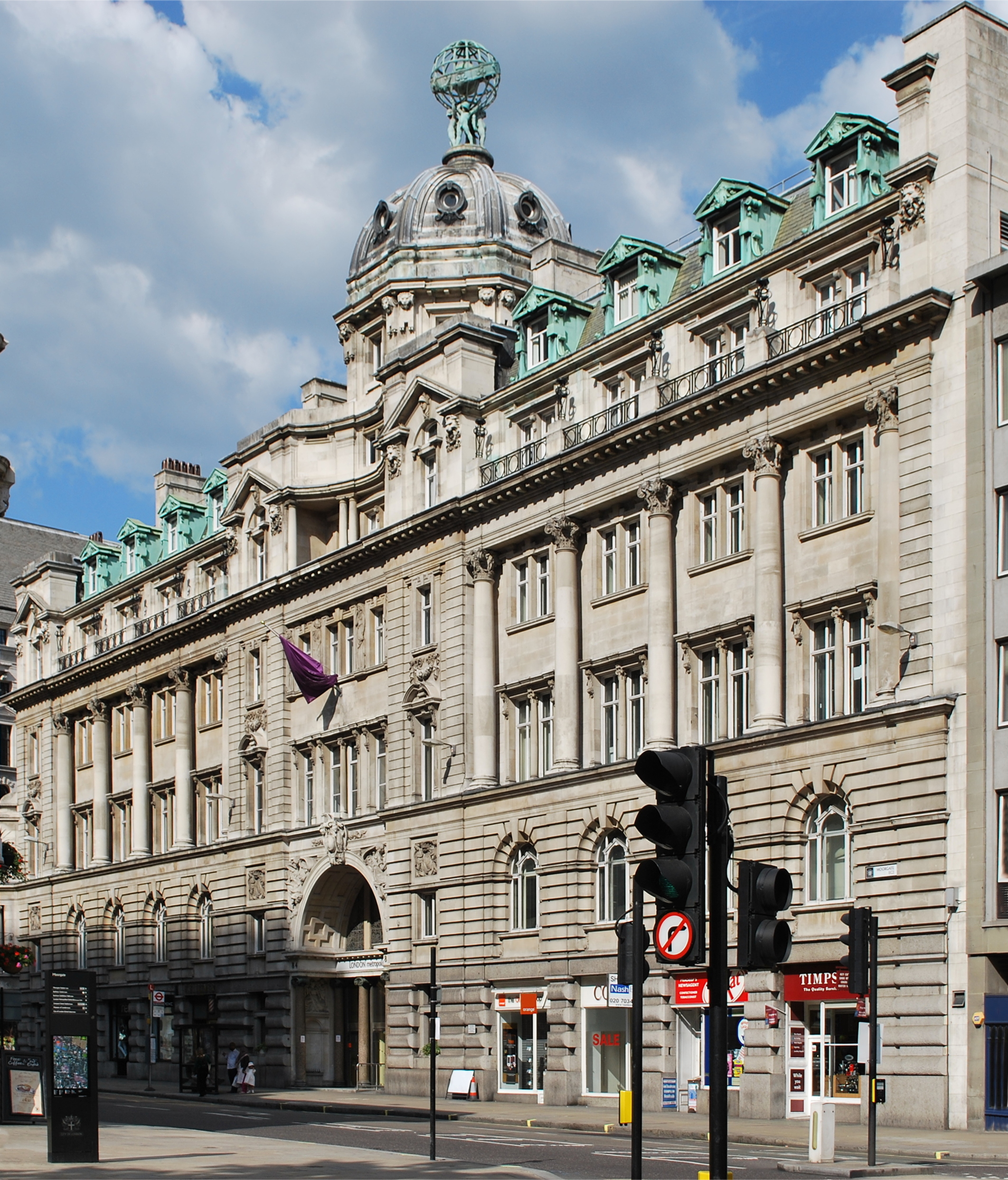|
John Belcher (architect)
John Belcher (10 July 1841 – 8 November 1913) was an English architect, and president of the Royal Institute of British Architects. He designed Chartered Accountants Hall (1890), one of the first neo-baroque buildings in London, and many of his later commissions are prime examples of lavish Edwardian municipal architecture. He was also known as a singer, cello player and conductor. Early life Belcher was born in Southwark, London on 10 July 1841. His father (1816–1890) of the same name was an established architect. They lived at 60 Trinity Church Square from 1849 to 1852. They had previously lived nearby at 3 Montague Terrace (now 8 Brockham Street), where Belcher was born in 1841. The son was articled with his father, spending two years in France from 1862, where he studied contemporary architecture, apparently more concerned with that promoted by Baron Haussman and Emperor Napoleon III than historic buildings. Career In 1865, Belcher was made a partner with his ... [...More Info...] [...Related Items...] OR: [Wikipedia] [Google] [Baidu] |
Frank Dicksee
Sir Francis Bernard Dicksee (27 November 1853 – 17 October 1928) was an English Victorian painter and illustrator, best known for his pictures of dramatic literary, historical, and legendary scenes. He also was a noted painter of portraits of fashionable women, which helped to bring him success in his own time. Life Dicksee's father, Thomas Dicksee, was a painter who taught Frank as well as his sister Margaret from a young age. The family lived in Fitzroy Square, Bloomsbury. Dicksee enrolled in the Royal Academy Schools in 1870 and achieved early success. He was elected to the Academy in 1891 and became its president in 1924. He was knighted in 1925, and named to the Royal Victorian Order by King George V in 1927. In 1921 Dicksee exhibited at the first exhibition of the Society of Graphic Art in London. Dicksee painted ''The Funeral of a Viking'' (1893; Manchester Art Gallery), which was donated in 1928 by Arthur Burton in memory of his mother to the Corporation o ... [...More Info...] [...Related Items...] OR: [Wikipedia] [Google] [Baidu] |
Gothic Architecture
Gothic architecture (or pointed architecture) is an architectural style that was prevalent in Europe from the late 12th to the 16th century, during the High and Late Middle Ages, surviving into the 17th and 18th centuries in some areas. It evolved from Romanesque architecture and was succeeded by Renaissance architecture. It originated in the Île-de-France and Picardy regions of northern France. The style at the time was sometimes known as ''opus Francigenum'' (lit. French work); the term ''Gothic'' was first applied contemptuously during the later Renaissance, by those ambitious to revive the architecture of classical antiquity. The defining design element of Gothic architecture is the pointed or ogival arch. The use of the pointed arch in turn led to the development of the pointed rib vault and flying buttresses, combined with elaborate tracery and stained glass windows. At the Abbey of Saint-Denis, near Paris, the choir was reconstructed between 1140 and 1144, draw ... [...More Info...] [...Related Items...] OR: [Wikipedia] [Google] [Baidu] |
Tapeley Park
Tapeley is a historic estate in the parish of Westleigh in North Devon, England. The present mansion house known as Tapeley Park is a grade II* listed country house, built or enlarged from an existing structure in about 1704, remodeled in the 19th century and again in the early 20th century when pilasters, portico, pediment and parapet were added to create a Queen Anne style building. In the mid 19th century the estate was inherited from the Clevland family by William Langham Christie of Glyndebourne in Sussex. His grandson was John Christie (born 1882), the founder of Glyndebourne Opera Festival, who bequeathed Tapeley to his daughter Rosamund Christie (1933–1988), who passed it onto her nephew Hector Christie (born 1963), who briefly turned it into a hippie commune. In 2011, Tapeley Park was the subject of an episode of the Channel 4 television programme ''Country House Rescue'', presented by the hotelier Ruth Watson, who advised on restoring the estate to a sound f ... [...More Info...] [...Related Items...] OR: [Wikipedia] [Google] [Baidu] |
Birmingham Daily Post
The ''Birmingham Post'' is a weekly printed newspaper based in Birmingham, England, with a circulation of 2,545 and distribution throughout the West Midlands. First published under the name the ''Birmingham Daily Post'' in 1857, it has had a succession of distinguished editors and has played an influential role in the life and politics of the city. It is currently owned by Reach plc. In June 2013, it launched a daily tablet edition called ''Birmingham Post Business Daily.'' History The '' Birmingham Journal'' was a weekly newspaper published between 1825 and 1869. A nationally influential voice in the Chartist movement in the 1830s, it was sold to John Frederick Feeney in 1844 and was a direct ancestor of today's ''Birmingham Post''. The 1855 Stamp Act removed the tax on newspapers and transformed the news trade. The price of the ''Journal'' was reduced from seven pence to four pence and circulation boomed. Untaxed, it became possible to sell a newspaper for a penny, and the ... [...More Info...] [...Related Items...] OR: [Wikipedia] [Google] [Baidu] |
Edwardian Period
The Edwardian era or Edwardian period of British history spanned the reign of King Edward VII, 1901 to 1910 and is sometimes extended to the start of the First World War. The death of Queen Victoria in January 1901 marked the end of the Victorian era. Her son and successor, Edward VII, was already the leader of a fashionable elite that set a style influenced by the art and fashions of continental Europe. Samuel Hynes described the Edwardian era as a "leisurely time when women wore picture hats and did not vote, when the rich were not ashamed to live conspicuously, and the sun really never set on the British flag." The Liberals returned to power in 1906 United Kingdom general election, 1906 and made Liberal welfare reforms, significant reforms. Below the upper class, the era was marked by significant shifts in politics among sections of society that had largely been excluded from power, such as Laborer, labourers, servants, and the industrial working class. Women started to play ... [...More Info...] [...Related Items...] OR: [Wikipedia] [Google] [Baidu] |
Baroque Architecture
Baroque architecture is a highly decorative and theatrical style which appeared in Italy in the early 17th century and gradually spread across Europe. It was originally introduced by the Catholic Church, particularly by the Jesuits, as a means to combat the Reformation and the Protestant church with a new architecture that inspired surprise and awe. It reached its peak in the High Baroque (1625–1675), when it was used in churches and palaces in Italy, Spain, Portugal, France, Bavaria and Austria. In the Late Baroque period (1675–1750), it reached as far as Russia and the Spanish and Portuguese colonies in Latin America. About 1730, an even more elaborately decorative variant called Rococo appeared and flourished in Central Europe. Baroque architects took the basic elements of Renaissance architecture, including domes and colonnades, and made them higher, grander, more decorated, and more dramatic. The interior effects were often achieved with the use of ''quadratura'', or ... [...More Info...] [...Related Items...] OR: [Wikipedia] [Google] [Baidu] |
Lancaster, Lancashire
Lancaster (, ) is a city and the county town of Lancashire, England, standing on the River Lune. Its population of 52,234 compares with one of 138,375 in the wider City of Lancaster local government district. The House of Lancaster was a branch of the English royal family. The Duchy of Lancaster still holds large estates on behalf of Charles III, who is also Duke of Lancaster. Its long history is marked by Lancaster Castle, Lancaster Priory Church, Lancaster Cathedral and the Ashton Memorial. It is the seat of Lancaster University and has a campus of the University of Cumbria. The Port of Lancaster played a big role in the city's growth, but for many years the outport of Glasson Dock has become the main shipping facility. History The name of the city first appeared in the Domesday Book of 1086, as ''Loncastre'', where "Lon" refers to the River Lune and "castre" (from the Old English ''cæster'' and Latin ''castrum'' for "fort") to the Roman fort that stood on the site. Ro ... [...More Info...] [...Related Items...] OR: [Wikipedia] [Google] [Baidu] |
Colchester Town Hall
Colchester Town Hall is a municipal building in the High Street in Colchester, Essex, England. The town hall, which is the headquarters of Borough of Colchester, Colchester Borough Council, is a Grade I listed building. History The first building on the site, a moot hall, was completed in 1277, remodelled in 1374 and demolished in 1843. The second building on the site, which was designed by John Blore and R. Brandon in the Neoclassical architecture, neoclassical style with six full-height Doric order pilasters, was completed in 1845. After it was found to be unstable civic leaders decided to procure a further building on the same site in the late 19th century. Construction of the new building began in 1897. It was designed by John Belcher (architect), John Belcher in the Baroque architecture, Edwardian Baroque style and was opened by the former Prime Minister of the United Kingdom, Prime Minister, the Archibald Primrose, 5th Earl of Rosebery, Earl of Rosebery in 1902. The desi ... [...More Info...] [...Related Items...] OR: [Wikipedia] [Google] [Baidu] |
Electra House
Electra House is a building at 84 Moorgate, London, England. It is notable as the wartime London base of Cable & Wireless Limited, and office of Department EH — one of the three British organisations that merged in World War II to form the Special Operations Executive. Not to be confused with Electra House in Brixton, the depot for London Underground Train Operators based at Brixton on the Victoria Line History Architect John Belcher designed the building, which opened in 1902 as accommodation for the Eastern Telegraph Company. On 11 May 1933, the company transferred administrative functions to a new Electra House building on Victoria Embankment. This became the administrative headquarters for the renamed Imperial and International Communications, which became Cable & Wireless Limited in 1934. The Foreign Office created a propaganda organisation known as Department EH, after its headquarters Electra House. Department EH was involved in the monitoring of foreign embassy c ... [...More Info...] [...Related Items...] OR: [Wikipedia] [Google] [Baidu] |
High-relief
Relief is a sculptural method in which the sculpted pieces are bonded to a solid background of the same material. The term ''relief'' is from the Latin verb ''relevo'', to raise. To create a sculpture in relief is to give the impression that the sculpted material has been raised above the background plane. When a relief is carved into a flat surface of stone (relief sculpture) or wood (relief carving), the field is actually lowered, leaving the unsculpted areas seeming higher. The approach requires a lot of chiselling away of the background, which takes a long time. On the other hand, a relief saves forming the rear of a subject, and is less fragile and more securely fixed than a sculpture in the round, especially one of a standing figure where the ankles are a potential weak point, particularly in stone. In other materials such as metal, clay, plaster stucco, ceramics or papier-mâché the form can be simply added to or raised up from the background. Monumental bronze reliefs ... [...More Info...] [...Related Items...] OR: [Wikipedia] [Google] [Baidu] |
Harry Bates (sculptor)
Harry Bates (26 April 1850 – 30 January 1899) was a British sculptor. He was elected to the Royal Academy in 1892 as A.R.A. and was an active, if intermittent, member of the Art Workers Guild. He was a central figure in the British movement known as New Sculpture. Biography Bates was born on 26 April 1850 in Stevenage in Hertfordshire. He began his career as a carver's assistant, and before beginning the regular study of plastic art he passed through a long apprenticeship in architectural decoration working from 1869 for the firm of Farmer & Brindley. In 1879 he went to London and entered the South London School of Technical Art (formerly known as Lambeth School of Art, now the City and Guilds of London Art School). There he studied under Jules Dalou and won a silver medal in the national competition at South Kensington. In 1881, he was admitted to the Royal Academy schools, where in 1883 he won the gold medal and the travelling scholarship with his relief of ''Socrate ... [...More Info...] [...Related Items...] OR: [Wikipedia] [Google] [Baidu] |
Institute Of Chartered Accountants In England & Wales
The Institute of Chartered Accountants in England and Wales (ICAEW) is a professional membership organisation that promotes, develops and supports chartered accountants and students around the world. As of July 2022, it has over 198,000 members and students in 147 countries. ICAEW was established by royal charter in 1880. Overview The institute is a member of the Consultative Committee of Accountancy Bodies (CCAB), formed in 1974 by the major accountancy professional bodies in the UK and Ireland. The fragmented nature of the accountancy profession in the UK is in part due to the absence of any legal requirement for an accountant to be a member of one of the many Institutes, as the term ''accountant'' does not have legal protection. However, a person must belong to ICAEW, ICAS or CAI to hold themselves out as a '' chartered accountant'' in the UK (although there are other chartered bodies of British qualified accountants whose members are likewise authorised to conduct restric ... [...More Info...] [...Related Items...] OR: [Wikipedia] [Google] [Baidu] |

.jpg)





